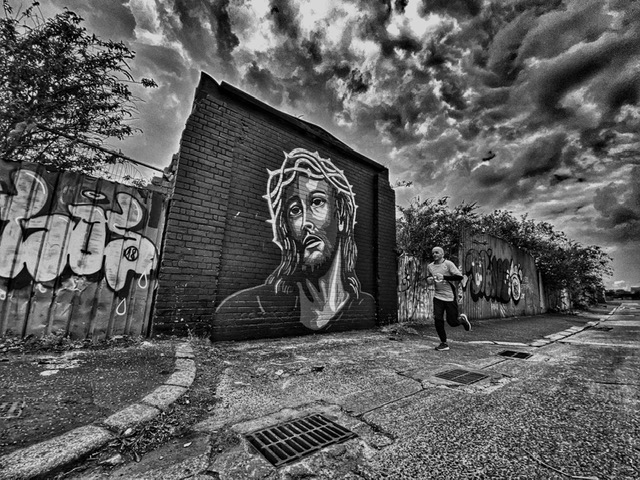Mike Tomlinson (below) has spent a lifetime speaking truth to power. From the publication of the Obair report in 1988 exposing scandalous economic

discrimination against West Belfast to the present day and his efforts to assess the cost in lives being paid by wrongheaded Department of Health handling of the coronavirus, he has been met by fury from the establishment. when he argued last week in the Irish Times that the less stringent approach to tackling Covid-19 in the North was leading to a higher death rate, Facebook-funded Factcheck NI had him branded as a peddler of falsehoods, leading to his work being censored by the global advertising giant which created Fake News. Today, he writes for belfastmedia.com to stand over his contention that Department of Health failures are costing lives. Mike Tomlinson is Emeritus Professor of Social Policy at Queen's University Belfast.
Science or Politics?
At a time like this, it seems insensitive – even immoral – to talk about death as a statistic when so many are grieving and waiting anxiously for news of loved ones in care homes and hospitals. But we have to. So many of the decisions around Covid-19 involve numbers.
Take one of the big decisions early on. Downing Street ordered testing and tracing in the community to stop from 12 March. Only those admitted to hospitals were to be tested from then on. This was adopted in the North whereas the Republic, following World Health Organisation guidelines, had already begun to expand its testing and tracing programme through 46 testing centres and thousands of tracers. And then, school closures. The decision to close schools in the North was eight days behind the Republic although many had the good sense to act earlier.
The pace of lockdown wasn’t just an issue for the island of Ireland. There were clear disagreements between Ireland and Britain over what to do about mass gatherings. Ireland cancelled the Six Nations rugby fixture between Italy and Ireland due to take place on 7 March. But England v Wales at Twickenham, attended by Boris Johnson and Carrie Symonds, went ahead on the same date.
There is a connection between this and the Cheltenham Festival which was due to commence three days later. In a letter to the local council, the Festival organisers justified the decision to go ahead with the four-day event by citing Johnson’s presence at Twickenham. On Wednesday that same week, the match between Liverpool and Atlético Madrid at Anfield was also allowed to go ahead. Cheltenham and Liverpool are now widely regarded as ‘super-spreader events’ for Ireland as some attendees will have brought the infection back to the island. Cancelling the Italy game may have had limited effect as some Italians travelled to Belfast and Dublin for the weekend anyway.
This is what #COVID19 cases looked like in Gloucestershire, three weeks after the Cheltenham Festival. The black dot is the racetrack and the blue dot the train station that serves it. https://t.co/HwLKE0Mz5a pic.twitter.com/y53TTX9LRG
— Alex Andreou (@sturdyAlex) April 24, 2020
What was ‘the science’ behind these decisions, especially the one about restricting testing to hospitals? At the time we were told that the spread of the virus was now beyond containment. It was out there in the community spreading at a rate of two or three people for every infected person, described as a reproduction factor (R0 ) of 2-3. It was therefore pointless to waste resources on testing and contact tracing, especially since test kits were in such short supply – or so the argument went.
What goes into calculating R0? Professor Chris Whitty, England’s Chief Medical Officer, was asked this exact question when he appeared last Friday (24th) before the Science Committee at Westminster. Other CMOs, including the North’s Dr Michael McBride, were also part of the hearing via Zoom. After some prompting, Whitty eventually said: the number of hospital admissions and the number of deaths. If that’s the case, how do you arrive at one number that covers the whole UK, as if the disease was spreading uniformly? Not a single Covid-19 death had occurred in the North by this stage. Is this a matter of public health being trumped by Matt Hancock’s concern with ‘national unity’?

"I DON'T BUY IT." Prof Tomlinson rejects claim that Covid-19 is affecting all of Ireland uniformly
I don’t buy it. Nor do I think that Covid-19 is necessarily affecting the island of Ireland uniformly, which is why I wrote about death rates north and south in the Irish Times last week (22nd April). I found that the Republic’s death rate, for hospital-based deaths, is substantially lower than the North’s. (It has to be hospital deaths of people tested Covid-19 positive because this is the only death record that is strictly comparable between the two jurisdictions.)
I think this is the outcome of two different public health policies, particularly around testing, tracing and isolation. And I firmly believe we could be saving more lives with a common approach and a high level of cooperation north and south. To even consider the easing of lockdown measures without seeing the island of Ireland as a whole makes little sense.



